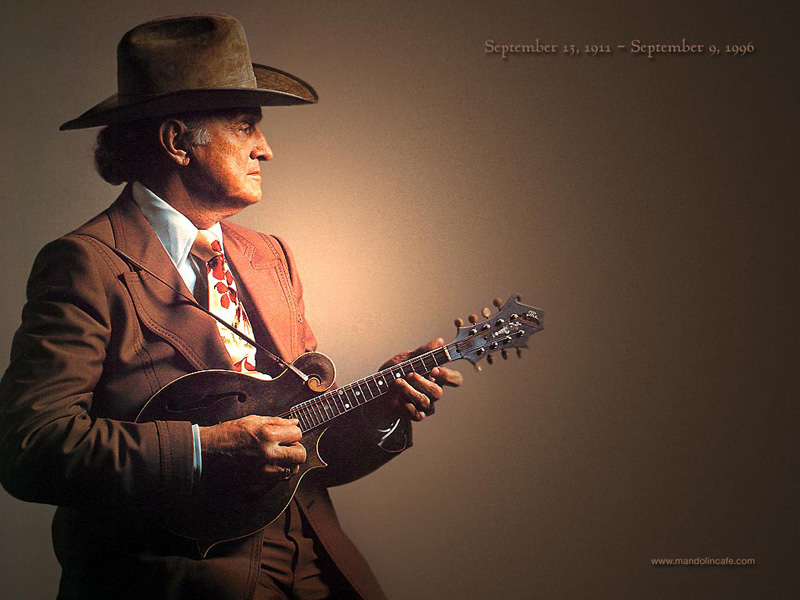
 Especially on the centennial of Bill Monroe’s birth, it is important to reflect on the origins of the music we all love. And in light of the heated discussions of progressive versus traditional – and “What is or isn’t bluegrass?” – perhaps we should step back and focus on how the music came to be, and the larger context of its significance.
Especially on the centennial of Bill Monroe’s birth, it is important to reflect on the origins of the music we all love. And in light of the heated discussions of progressive versus traditional – and “What is or isn’t bluegrass?” – perhaps we should step back and focus on how the music came to be, and the larger context of its significance.
Bluegrass is one of the few truly American forms of music, and its sounds resonate around the globe. It is also considered the only genre of music which can point to an individual as its creator. Bill Monroe is credited with having invented bluegrass music in 1945. He and the then current members of his band The Blue Grass Boys – Lester Flatt, Earl Scruggs, Chubby Wise, and Howard Watts – created a whole new sound that was all their own, owing in large part to the musical genius of the band’s leader, Bill Monroe
People often debate how much musical creation was involved and if whether this was the creation of new sounds or just the adaptation of previously existing styles. No one argues that bluegrass music is an American music form, but how or why it should be called American is under scrutiny. Some say that it is American because it was created by those living in the US, while others say it is because the influences were brought to the United States by immigrants long before 1946, that these influences wove their way into the American music scene, and were woven together to become bluegrass.
Bluegrass is part of the American melting pot because of the varying influences which formed it for a number of reasons. One being that the instruments in a traditional bluegrass band (banjo, fiddle, guitar, mandolin, and bass) have international origins: the guitar is an instrument from Spain; the mandolin, fiddle, and acoustic bass, all come from Italy; and the design for the banjo was brought over by slaves from Africa. All of these instruments are critical in a bluegrass band and they all originate from around the globe, but come together to form a distinctly American sound.
It is also argued that, if you trace the musical influences of the rural south back to their respective nations of origins, there will be distinct musical types that came together in the rural south to form the mountain folk styles from which bluegrass originated. These musical influences come from all over the globe – Ireland, Scotland, Africa, and England, just to name a few. The sounds these immigrants brought with them to the Appalachian regions in the 1600’s are considered the roots of mountain, old time, country, and bluegrass music.
Bluegrass music is perhaps most commonly considered an American art form because of the musical innovations implemented by Bill Monroe during the late thirties and forties, which came to fruition with other ideas brought to the group by 1945. Monroe pulled influences from all over the American landscape like string bands, both black and white gospel songs, blues music, country music, and traditional songs used by African-American workers. Bill and the Blue Grass Boys were popular country stars before they created bluegrass music, and they were always a little different than other acts owing to Monroe’s unerring vision for his music.
Monroe’s band was always known for their hard driving sound and his distinctively high-pitched vocals. What made the year 1945 special for the Blue Grass Boys were the musical influences that came together from the new members of the group, most significantly the original and unique style of three-finger banjo picking of Earl Scruggs, now generically called Scruggs-style. This type of picking was a sensation from the start, and brought the banjo from the background to a leading role in what is now the familiar bluegrass sound. Other musical innovations at this time included Flatt’s new way of bridging gaps between chords by using bass runs instead of other chords. Chubby Wise’s bluesy fiddle playing, reminiscent of western swing, was also instrumental in securing the fiddle’s role in the traditional bluegrass sound.
The creation of bluegrass music revolutionized the American musical landscape forever. No matter how you look at it, bluegrass is one of the few true American musical forms. On that, can we all agree?
Regardless whether we consider it an American art form because of its influences from early immigrants, or from southerners trying to make a sound all their own, it remains an artistic treasure that will be cherished for generations to come. We may not be of one mind on what can properly be considered bluegrass, but we should all be united in supporting the music and the impact it has made, and will continue to make on American culture and history.







